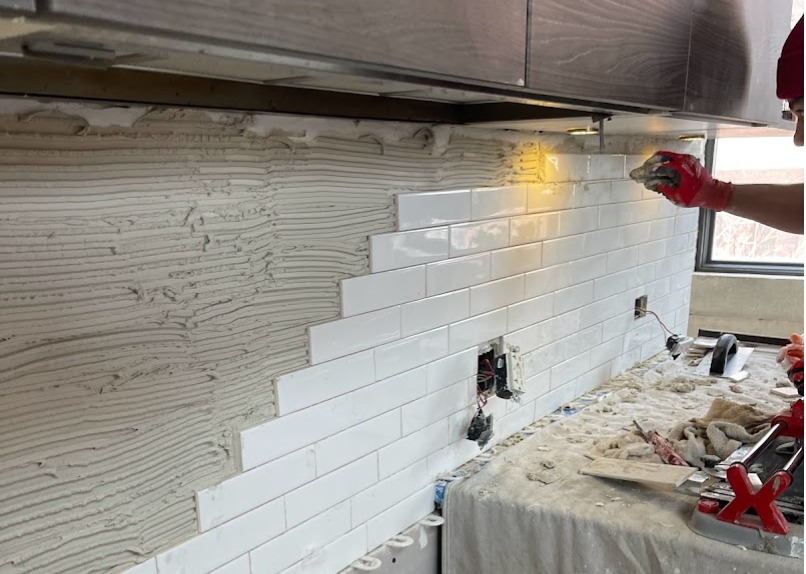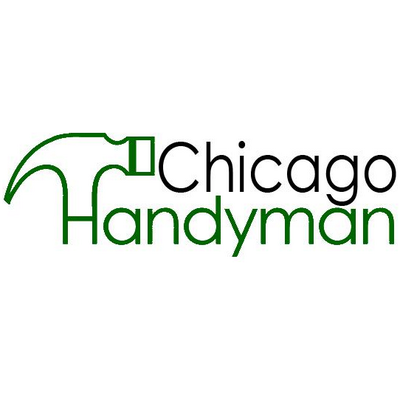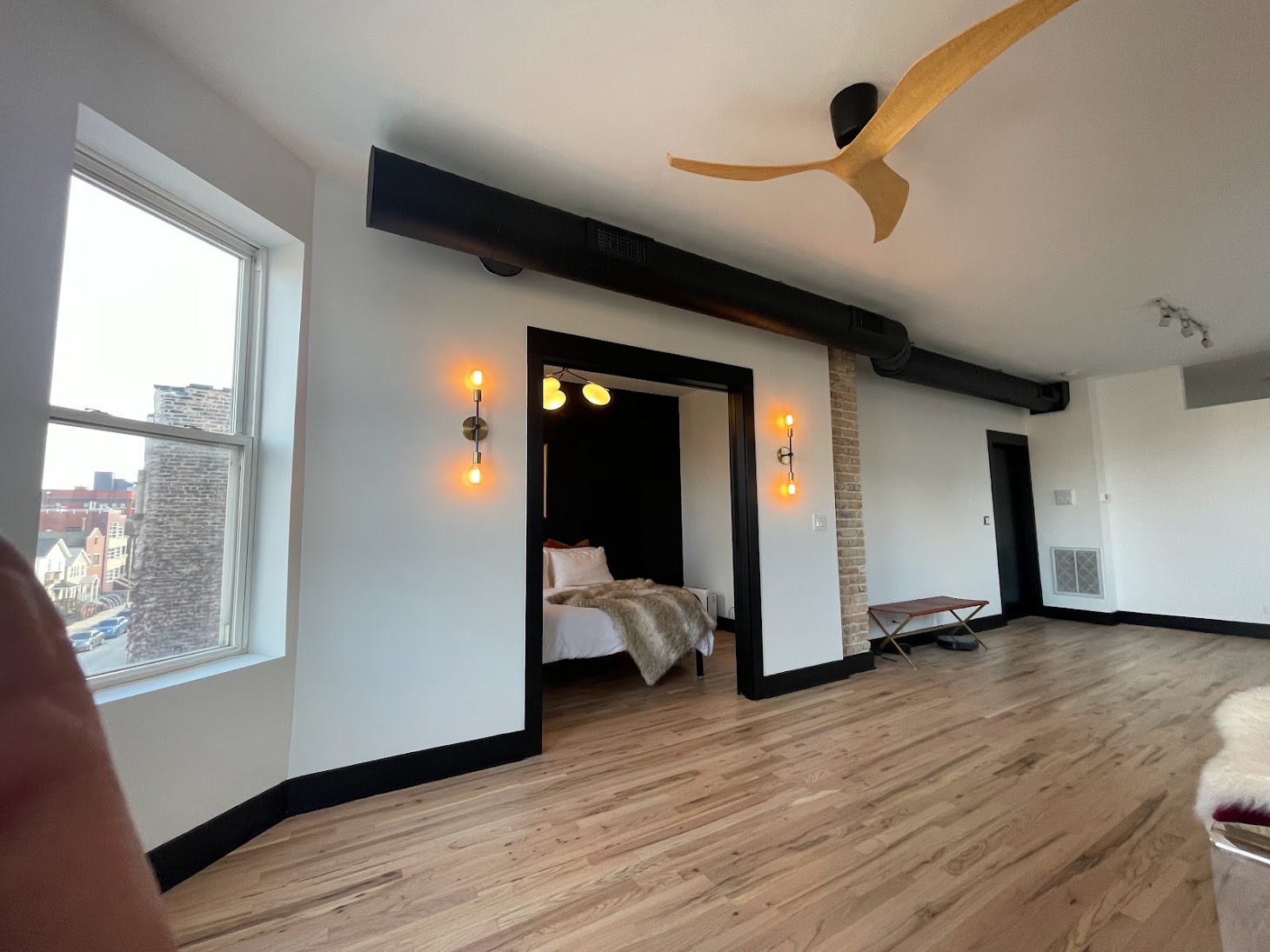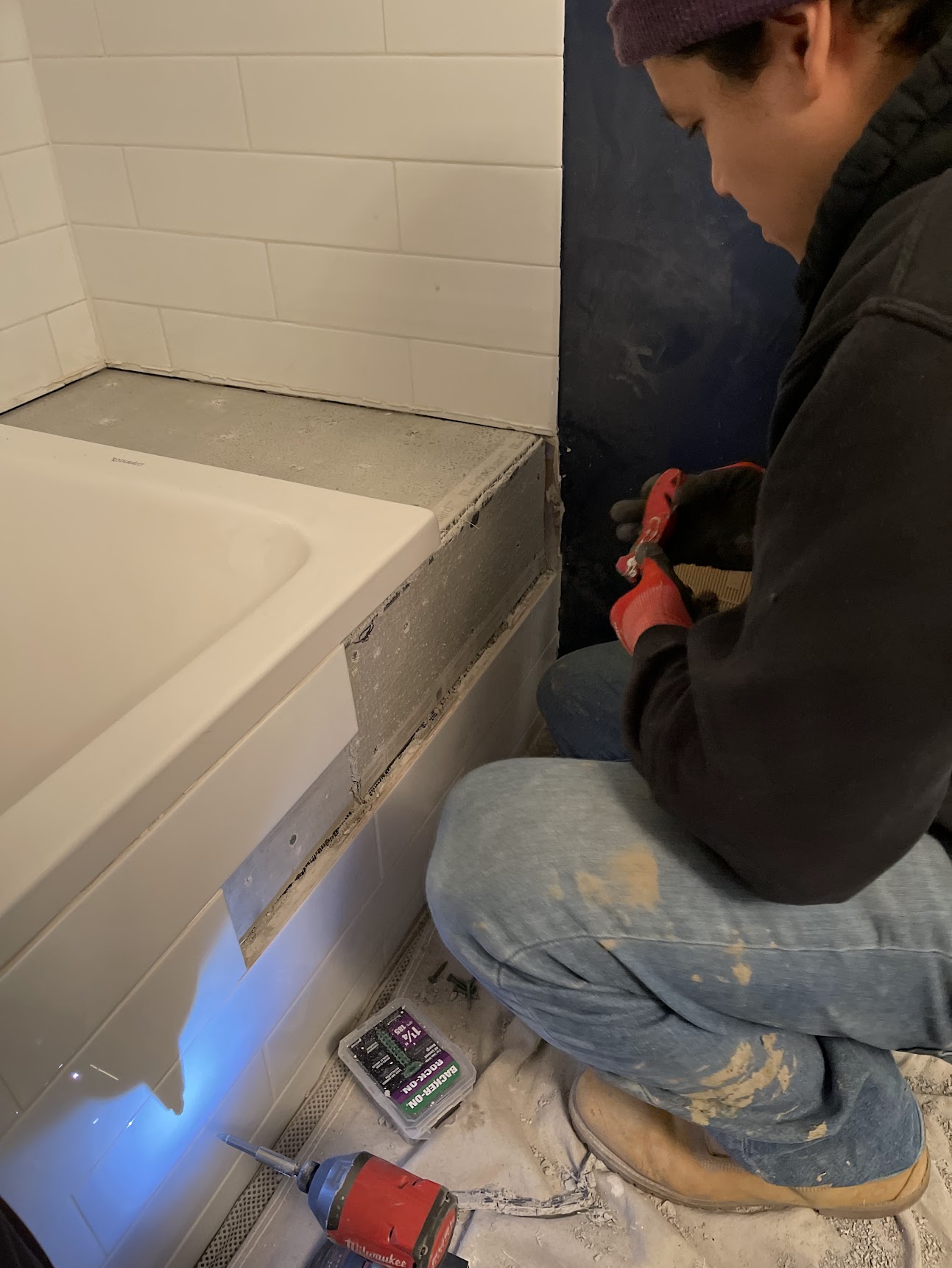Thinking about sprucing up your home with some new tile? You might be wondering if you can skip the hassle of installing backer board and just tile right over your existing drywall. Yes, you can tile over drywall in many cases, but there are some important things to consider first.

Tiling over drywall can be a great option for certain areas of your home, like kitchen backsplashes or dry wall spaces. It’s often quicker and easier than installing cement board. But it’s not always the best choice, especially in wet areas like showers or bathtub surrounds.
Before you start slapping tiles on your walls, it’s important to check the condition of your drywall and prep it properly. You’ll need to make sure the surface is clean, smooth, and free of any paint or wallpaper. Taking these steps will help ensure your new tiles stick around for the long haul.
Key Takeaways
- Tiling over drywall is possible in many areas but not recommended for wet spaces
- Proper surface preparation is crucial for successful tile adhesion
- Consider the location and moisture exposure when deciding to tile directly over drywall
Preparing Drywall for Tiling
Getting drywall ready for tiling takes a few key steps. It’s important to check the wall’s condition, deal with any moisture problems, and prep the surface properly.
Assessing Drywall Condition
Before tiling, take a close look at your drywall. Check for cracks, holes, or loose tape on the joints. These need fixing first.
Fill small holes with drywall mud. For bigger damage, you might need to patch or replace sections. Make sure the wall is flat. Bumps or dips can mess up your tile job.
Don’t forget to check if the drywall paper is torn. If it is, you’ll need to fix it before tiling. A skim coat of drywall compound can help smooth things out.
Addressing Moisture Issues
Moisture and drywall don’t mix well, especially when you’re planning to tile. Check for any signs of water damage or mold. These are big red flags.
In damp areas like bathrooms or kitchens, consider using a waterproof membrane. This extra layer helps protect the drywall from moisture.
Make sure to fix any leaks before you start. Even small drips can cause big problems down the road. If the drywall feels soft or crumbly, it might be too damaged to tile over.
Priming and Sanding for a Strong Bond
A smooth, clean surface is key for tiles to stick well. Start by sanding the drywall to get rid of any bumps or rough spots. Use fine-grit sandpaper for best results.
After sanding, clean off all the dust. Then, apply a good primer. This helps the tile adhesive bond better to the wall. Choose a primer made for tiling projects.
Let the primer dry completely. This usually takes a few hours. Once it’s dry, your drywall should be ready for tiling. The smooth, primed surface will help your tiles stick better and last longer.
Tiling Techniques and Considerations

Tiling over drywall requires careful planning and execution. The right materials and methods can make a big difference in the final result.
Choosing the Right Tile and Adhesive
Picking the best tile for drywall is key. Lighter tiles work well since drywall can’t hold as much weight as other surfaces. Ceramic and porcelain tiles are good choices. They come in many styles and sizes.
For adhesive, thin-set mortar is often the go-to option. It creates a strong bond between the tile and drywall. Make sure to get a type meant for drywall use.
Large tiles can be tricky on drywall. They may need extra support to prevent sagging. Smaller tiles are often easier to work with on this surface.
Installing Tiles on Drywall
Before tiling, prep the drywall. Clean it well and fix any damage. Some pros suggest using a waterproof membrane for extra protection.
Apply the adhesive with a notched trowel. Spread it evenly to ensure a good bond. Press tiles firmly into place. Use spacers to keep gaps even.
For wet areas like bathrooms, extra care is needed. Proper sealing is a must to prevent moisture damage.
Applying Grout and Sealer
Once tiles are set, it’s time for grout. Mix it according to the instructions. Use a rubber float to spread it over the tiles. Fill all gaps completely.
Wipe away excess grout with a damp sponge. Be careful not to remove too much from the joints.
After the grout dries, apply a sealer. This helps protect against stains and moisture. Choose a sealer that fits your tile type and location.
Remember to reseal grout lines periodically. This keeps them looking good and working well over time.
Frequently Asked Questions
Tiling over drywall can be tricky in different areas of the home. It’s important to consider moisture, weight, and surface prep. Let’s tackle some common questions about tiling on drywall in kitchens, bathrooms, and showers.
Is it cool to put tiles up on drywall in the shower area?
Nope, it’s not a good idea to tile directly on drywall in showers. Water and drywall don’t mix well. Moisture can damage the drywall and lead to mold growth.
For showers, use cement board or another waterproof backer board instead. These materials can handle the wet conditions better than regular drywall.
Hey, can you slap some tiles on sheetrock when fixing up a bathroom?
It depends on where in the bathroom you’re tiling. For areas that don’t get super wet, like behind a sink, you can tile over drywall. Just make sure to prep the surface properly.
But for shower walls or tub surrounds, stick with waterproof backer boards. They’ll give your tiles a better foundation in those splashy spots.
What’s the deal with tiling over drywall in the kitchen, any good?
Tiling over drywall in the kitchen is usually okay. Kitchens don’t face the same moisture issues as bathrooms. Just be sure to prep the drywall surface first.
Clean the wall, repair any damage, and use the right adhesive. For backsplashes, drywall works fine as a base for tiles in most cases.
I’ve got a painted drywall, can tiles actually stick to that?
Yes, you can tile over painted drywall, but it needs some prep work. Rough up the painted surface with sandpaper to help the adhesive stick better.
Make sure the paint isn’t peeling or flaking. If it is, you might need to strip it off first. Use a good quality tile adhesive made for painted surfaces.
How much tile weight will drywall hold without throwing in the towel?
Drywall can typically support about 1.6 pounds per square foot of tile. That’s enough for most ceramic and porcelain tiles used in homes.
For heavier tiles or natural stone, you might need to add extra support. Consider using a stronger backer board or adding studs to the wall.
When setting up tiles, how do you get drywall ready for the big show?
Start by cleaning the drywall surface. Get rid of dust, dirt, and any loose bits. Fix any cracks or holes with joint compound.
Sand the wall smooth. If it’s painted, scuff up the surface a bit. Apply a primer if needed. Then use the right adhesive for your tiles and get tiling!








